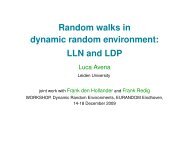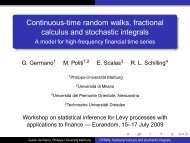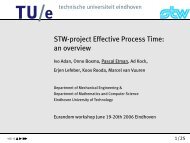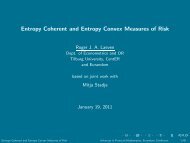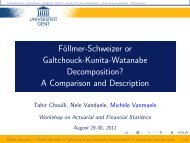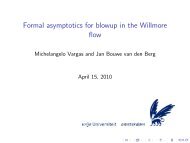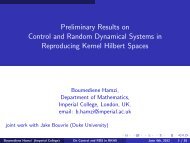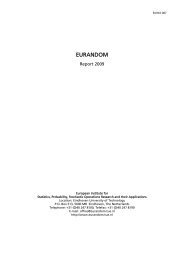Busse balloons - from the reversible Gray-Scott model ... - Eurandom
Busse balloons - from the reversible Gray-Scott model ... - Eurandom
Busse balloons - from the reversible Gray-Scott model ... - Eurandom
You also want an ePaper? Increase the reach of your titles
YUMPU automatically turns print PDFs into web optimized ePapers that Google loves.
Introduction<br />
Rise of Patterns<br />
The <strong>Busse</strong> balloon<br />
Conclusions and ongoing research<br />
The Eckhaus band: symmetric (<strong>Gray</strong>-<strong>Scott</strong>) case<br />
Let A be <strong>the</strong> amplitude of <strong>the</strong> emerging pattern. Then <strong>the</strong> pattern can<br />
be written out as<br />
U ∝ U0 + εA(ξ, τ)e ikc x + c.c. + h.o.t.<br />
In <strong>the</strong> case of <strong>the</strong> <strong>Gray</strong>-<strong>Scott</strong> system, e.g., we find for A a real GLE:<br />
Aτ = 2<br />
√ b A + 2 √ 2Aξξ − 2<br />
9 (10√ 2 − 7)|A| 2 A<br />
A band of spatially periodic patterns bifurcates for<br />
k ∈ (kc − ε √ r, kc + ε √ r)<br />
Stable patterns only exist in <strong>the</strong> Eckhaus band<br />
<br />
r<br />
k ∈ (kc − ε<br />
3 , kc<br />
<br />
r<br />
+ ε<br />
3 )<br />
Sjors van der Stelt <strong>Busse</strong> <strong>balloons</strong>



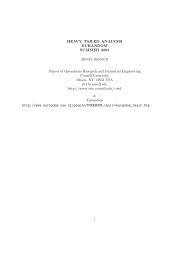
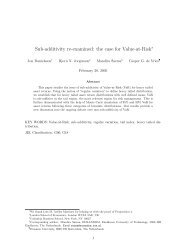
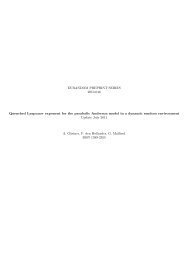
![The Contraction Method on C([0,1]) and Donsker's ... - Eurandom](https://img.yumpu.com/19554492/1/190x143/the-contraction-method-on-c01-and-donskers-eurandom.jpg?quality=85)
